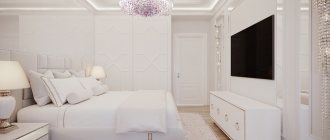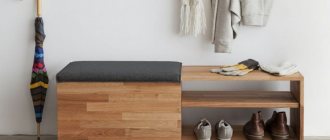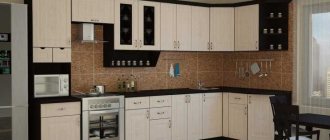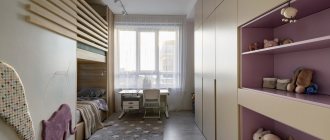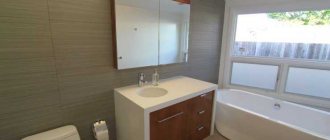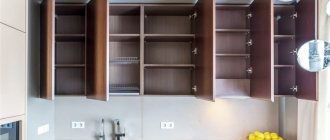Patina Features
A special decorative coating on wood surfaces allows you to give the furniture an almost antique look. With the help of golden, silver and other shades of patina on certain areas of the facades of the set, you can decorate the kitchen in an aristocratic style. Artificial patina is applied to relief surfaces, filling depressions and cracks. In this way, the effect of natural noble aging of the raw materials is achieved. This processing is not too expensive, but it can be used to create very elegant and even luxurious decorative items.
Furniture with a patina can look almost like a museum relic. At the same time, artificially aged headsets are equipped with completely modern functionality. When ordering such furniture for your kitchen, you need to pay attention to the location of the room in space. If its windows face north, you should choose sets of warm pastel colors with soft shades of patina. A cold silver finish can make a room feel uncomfortable.
What is patina
Patina in the kitchen is a fashionable trend in modern interiors.
Initially, this was the name for the oxide film on copper products, which had a blue (lapis lazuli) or green (malachite) tint. Later, this term began to denote any plaque that appears over time on metal or wood surfaces. Nowadays, patina is the name given to the aging effect of kitchen furniture or utensils.
There are many ways to give products an antique look, which involve the use of aggressive chemicals. They need to be implemented with caution.
Patination gives an aged look
Advantages and disadvantages of patina in the kitchen
In addition to external characteristics, artificial aging of furniture has a number of significant operational advantages:
- practicality. The finishing successfully hides minor cosmetic defects on furniture;
- additional protection from humidity and high temperatures;
- durability. The appearance of patinated surfaces has the ability not to change over time. Thanks to this fact, it is more profitable to purchase such sets than untreated furniture, which will really age after 5-7 years of use;
- affordable price. Despite the rich appearance of patinated products, their cost is relatively low. It is quite easy to choose a kitchen set that can look much more expensive than it actually is.
This method of aging furniture also has disadvantages:
- fire hazard. Processing technologies make such surfaces highly flammable. You should secure your home by insulating the wiring and distancing the headset from open fire;
- limited choice of other room design elements. Furniture with patina looks out of place in kitchens in Art Nouveau, high-tech, futurism and many others.
Types of patina
To artificially create the effect of antiquity, furniture manufacturers use various color and technological solutions. The choice of one or another shade of patina should be combined with the base on which it will be applied. Most often, the colors of noble metals are used to create a rich patina. However, if desired, you can order furniture with gray, yellow, brown and black finishes.
Golden/silver
Patina of this color allows you to create truly aristocratic sets. The treatment looks most impressive on white, brown and black surfaces. The basis for such decor should be a matte tone. On glossy furniture, the effect of the applied patina is greatly concealed.
Contrasting
Using this option, you can successfully highlight relief elements on facades. Golden, silver, bronze and copper tones are used for decoration. The joints and corners are treated with the selected composition, and then the main patination layer is applied on top. Due to this finishing, various patterned elements on the headset look more expressive.
Craquelure (crackle)
There is another original method of aging furniture. For this, manufacturers use a special craquelure varnish. Its peculiarity is the appearance after drying of many mesh cracks over the entire surface of the furniture. Then, according to the technology, it is necessary to very carefully rub a contrasting patina into the treated facades and coat the product with varnish.
Kitchen color options with patina
Any option for decorating a furniture set must first of all be combined with the main palette of the room. Faux antiquity is not effective on every surface. Many too bright colors draw attention away from the patina and onto themselves. If the owner of the kitchen wants to order a set for antiques, you should first decide on the main color of the product, and then select the appropriate composition for applying the coating.
White
Light surfaces are most often used for patination. After treatment with gold and silver compounds, they become very elegant and respectable. Also, a white kitchen set can be decorated with blue, green, and purple patina. Neutral color aesthetically combines with any shades, and the choice of coloring composition is largely determined by the taste preferences of the owners and the palette of other accessories. A white kitchen will look more attractive if beige and cream tones are used to decorate the walls and splashback.
Black
Very dark furniture is not suitable for every room. Black finishing can look impressive only in a spacious and bright room. However, if such a design solution turns out to be successful, the owners can enjoy a truly luxurious kitchen. An original and representative black set will be especially elegant if it is decorated with a golden, silver or white patina. Such framing enhances the attractiveness of the antique decor. An additional luxury effect can be achieved using fittings in matching metallic shades.
Beige, ivory
Kitchens in soft pastel colors are ideal for Provence-style rooms. This direction welcomes the presence of patina on furniture. You can also decorate classic kitchens using beige and ivory. For rustic design, the most acceptable colors are gray, blue, green and golden patina. The classic will look impressive when using silver tones.
Gray
Any strict and neutral color can be made much more attractive by applying decorative tinting. Gray furniture is transformed by the use of black, bluish, green and white patina. A modest matte set, processed in this way, can become sophisticated and moderately elegant. Gray color is good because it combines well with a wide variety of representatives of the spectrum. Therefore, for such a kitchen you can choose a patina of any shades that are also present in the design. Due to this, an exceptionally harmonious ensemble can be obtained.
Gray kitchens with artificial shading look equally good in both small and spacious rooms.
Green
The soothing color of the furniture and the use of patinated surfaces are most appropriate when creating a kitchen in a rustic style. For decoration, it is preferable to use pastel pistachio, olive and other light green shades. Decoration is carried out with white, blue, gray, brown and beige compositions. The light green set with gold patination looks exceptionally respectable.
Red
This kitchen looks very elegant and unusual. However, when choosing a set with patina, you should give preference to products in discreet red shades. The rich, bright color attracts all attention. Therefore, decorative processing may turn out to be unnecessary and even indicate a lack of taste and sense of proportion when creating a design project. On a red set, white, black, golden, brown and gray finishes look most harmonious.
How to complement a kitchen set with patina
The perception of the interior of any room is formed from many details. When purchasing a kitchen with patina, home owners should take care of a suitable frame for this piece of furniture. With the help of additional accessories, you can further emphasize the originality of the stylized “antique” headset.
Curtains
The color of kitchen curtains with patina is largely determined by the palette of furniture. Neutral tones can be complemented by curtains of almost any color. Red and green kitchens are decorated with curtains that match or harmonize with the main shade of the finish. Light curtains look good with any bright set. It is better to combine white furniture with richer textiles, since overuse of this color can lead to monotony in the room. If you plan to furnish a room in a classic style, you should opt for curtains without a pattern or with exquisite patterns that completely cover the window. For Provence, you can choose curtains in pastel colors with bright, tacky patterns. It is a good idea to use a shade of the patina applied to the furniture for textiles.
Wallpaper
Proper treatment of the walls allows you to focus the attention of guests and household members on the main element of the kitchen - a set with patina. For decoration, discreet neutral tones should be used. Patinated surfaces will stand out much more clearly against a modest background. In this case, the use of materials with simple patterns is allowed. Wallpaper with a rough texture will look good in a Provence style kitchen.
Floor and ceiling
Classic kitchens in light colors go well with other neutral and contrasting shades. For finishing the ceiling, it is preferable to choose white. This design move creates the image of a spacious room with plenty of air. Kitchen units with patinas in other colors also pair well with white. The basic rule when finishing the ceiling is that it should be lighter than the furniture in the room. You can use the color of the headset as a basis, but 2-3 shades lighter.
A much larger selection of colors and textures is available for kitchen flooring. The main criterion for choosing a decoration method is color and texture matching the style of the room and the color of its main elements.
Apron
The area between the wall cabinets and the working surface of the kitchen furniture should be finished taking into account 2 factors:
- the need for frequent cleaning and washing:
- compliance of materials with the style of the set with patina.
You should select coatings that are easy to clean. Otherwise, the surface of the apron will very soon acquire a neglected appearance and will significantly reduce the impression of artistically decorated furniture. Washable wallpaper, stone cladding, MDF, ceramic tiles are ideal. A very good solution would be to use a finishing shade that matches the tone of the patina.
Table and chairs
The noble elegance of the classics and the simplicity of the rustic style rarely allow the use of modern plastic materials for other kitchen furniture. Sets with patina can only go well with wooden tables and chairs. These furniture elements are also successfully subjected to artificial aging. This makes it easy to create the impression that all kitchen accessories belong to the same era. A good solution would be to decorate wood with carvings. For Provence-style rooms, you can use wicker chairs.
Kitchen appliances
When purchasing a set in an old style, you should be very careful about the choice of household appliances, without which no kitchen can do. Modern technology can negatively affect the integrity of the perception of the image of the room. If the devices look too advanced, it is better to hide them behind patinated facades. For an antique kitchen, you should purchase models that are not too pretentious. Such technology can be built into a headset without the risk of disrupting the overall impression. The color of the appliances should not sharply contrast with the kitchen surfaces. For bright rooms, white appliances are suitable, for red, green and black – metallic. Preference should be given to matte and cream shades of case materials.
Lighting
Styles that most often use furniture with patina imply an abundance of sun. In addition, the lack of light will not allow you to fully appreciate the beauty of patinated surfaces. For Provence, the effect of natural lighting in the room will be more harmonious. In such kitchens, a sufficient number of lamps with fluorescent lamps should be installed. Premises in a classic style allow you to choose from a variety of options an elegant chandelier that will best suit the design idea.
What color is patina?
To make kitchen furniture look natural, choose natural tones: silver, gold, copper, bronze. They are universal, used in dark and light kitchens. Makes metals and wood look older.
Metal should be combined with other textures skillfully: a warm brown or beige base (champagne, ivory) is emphasized by gold or copper processing. A cold gray, black, white kitchen is aged with silver.
In the photo there is a gray and white aged set
If application is intended to be on a colored base, the easiest way is to choose a color 2-3 shades darker than the original one. Blue patina for blue furniture, brown for beige. An interesting effect is obtained if you play with contrast: a snow-white kitchen with a black patina, blue with red.
What interior style should you choose for a kitchen with patina?
The spirit of antiquity is more often found in two variations of room design - classic and Provence. With the help of a special coating, furniture can easily be given a touch of antiquity inherent in these areas. Depending on the color and processing method, you can get either an aristocratic kitchen or a rustic one. In this case, the base color of the headset plays an important role.
Classic
Light kitchens with patina on the facades look unusually aristocratic and elegant. It is these qualities that are important for decorating rooms in a classic style. This direction requires adherence to measure and subtle taste in decorative elements. The noble touch of antiquity is a completely self-sufficient decoration. Using patina to create a classic food preparation room, you don’t have to resort to an abundance of accessories and other methods of refining surfaces.
For kitchens designed in this direction, it is recommended to order models in which the upper cabinets reach the ceiling. Combined sets look very nice, in which blank facades alternate with glazed and lattice sections. This option will allow you to unobtrusively and tastefully decorate any set of furniture with patina. However, with a large number of similar decorations, carvings, relief protrusions, and decorative fittings, you should choose a patina of restrained tones. Gold and silver in this case will look too provocative. Also, designers strongly do not recommend displaying household appliances. The combination of “antique” furniture and modern electrical appliances can destroy stylistic harmony.
Provence
Rustic style involves the use of old and darkened decorative elements in everyday life. Patination of surfaces is a good way to create the atmosphere of a provincial house in the south of France. Sets designed in Provence style can be treated with various types of patina. To achieve the desired look, it is necessary to match the color of all kitchen details. This trend welcomes warm matte base tones and bright accessories.
Also, in the style of Provence, the use of crackle technology is very appropriate. This finishing method creates the effect of peeling paint on the surface of the facades. This type of processing is more expensive than simple options, but crackle looks very appropriate when framed appropriately.
What is patina and what features need to be taken into account when decorating?
The word “patina” comes from the Italian “patina”, which originally meant a coating on copper.
The green film has a second name - “verdigris”. Other metals are also subject to patination: iron rusts, silver turns black. Today, patina in interior design refers to artificially aged objects - furniture, accessories, finishing details, decor.
The antiquity effect can be:
- Natural. Exactly what we talked about in the first paragraph - greening of copper, rust.
- Artificial. Man-made to highlight the sophistication of its details.
According to the material they are distinguished:
- Metal. In a kitchen with patina, this could be aged handles, pipes, or faucets.
- Wooden. The effect can be craquelure - when white or any other color with a cracking effect is applied to the entire surface. Or partial - in this case, the protruding elements are aged or, conversely, the recesses are made darker.
The photo shows gold contour patination of kitchen cabinets
DIY kitchen patination
It is not necessary to completely change the furniture to update the boring style of the room. With simple steps you can quickly refresh your kitchen decor at home. One of the options for adding a new flavor to familiar furniture is to apply an artificial patina. This procedure can be performed without professional help. The work does not have to be done in compliance with strict geometry. Thanks to small roughnesses and inaccuracies, the effect of natural aging of kitchen furniture is increased. Do-it-yourself patination is performed in 7 steps:
- Grinding of facades with a machine using a 180 grit disc.
- Treatment with wood stain from a spray bottle.
- Application of self-priming varnish.
- Repeated grinding 1-2 hours after the above procedures.
- Spraying patina (to increase the natural effect, apply the composition unevenly and in several passes).
- Sanding with sandpaper.
- Varnishing of the finished product.
In a similar way, it is enough to treat the outer surfaces of furniture facades. If desired, the inner walls of the set can also be patinated, but this is not economically feasible.
Types and techniques of patination
Patina can be natural (natural) or artificially created. The latter is achieved through special techniques that allow you to achieve the desired result faster.
Artificial patination can also be done in several ways. Below are techniques that are applicable not only for furniture made of solid wood, but also for furniture with film, veneered MDF facades.
The simplest one is coating with acrylic paint.
The universal composition allows them to be applied to any kitchen materials.
To create a plaque on the facades, you just need to choose the right paint tone that goes well with the set. With a light kitchen this will not be a problem. Gold and silver patina looks most noble and natural against the background of light colors. The corresponding color can also be found among acrylic compositions.
The paint is applied with light, abrupt strokes, mainly on the bulges and depressions of the furniture, and the smooth surface of the facades is left untouched. Another option is to cover the facades in several layers and sand them in the right places, revealing the areas covered with gold paint. In the second case, you will spend more time, but the result will look more neat and natural. For beginners this is the most suitable method.
The technology is simple, but requires knowledge of all the intricacies: preparation, protective primer, stages of paint application, etc. How to properly perform patination, watch the video:
Artificial cracking
This technique is called craquelure. The method is more complex and expensive. You can use ready-made products, for example, beveled varnish, which, after drying, will create the desired result. You can make your own composition from home, household products - PVA glue, egg white, etc.
Stain coating
Using this method you can create the effect of wood that has turned gray over time.
The stain is used only for natural wood, highlighting the natural wood pattern and relief. Furniture made from MDF will not work.


